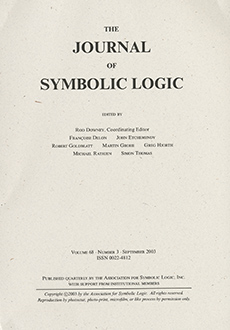Abstract
In 2007, Terence Tao wrote on his blog an essay about soft analysis, hard analysis and the finitization of soft analysis statements into hard analysis statements. One of his main examples was a quasi-finitization of the infinite pigeonhole principle IPP, arriving at the “finitary” infinite pigeonhole principle FIPP₁. That turned out to not be the proper formulation and so we proposed an alternative version FIPP₂. Tao himself formulated yet another version FIPP₃ in a revised version of his essay.
We give a counterexample to FIPP₁ and discuss for both of the versions FIPP₂ and FIPP₃ the faithfulness of their respective finitization of IPP by studying the equivalences IPP ↔ FIPP₂ and IPP ↔ FIPP₃ in the context of reverse mathematics ([9]). In the process of doing this we also introduce a continuous uniform boundedness principle CUB as a formalization of Tao's notion of a correspondence principle and study the strength of this principle and various restrictions thereof in terms of reverse mathematics, i.e., in terms of the “big five” subsystems of second order arithmetic.
Citation
Jaime Gaspar. Ulrich Kohlenbach. "On Tao's “finitary” infinite pigeonhole principle." J. Symbolic Logic 75 (1) 355 - 371, March 2010. https://doi.org/10.2178/jsl/1264433926
Information





